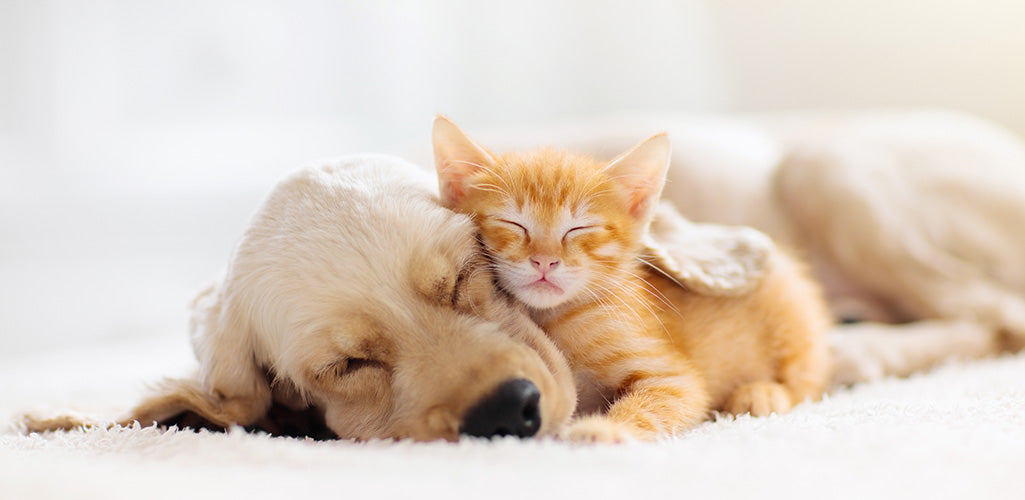
What we can learn from the sleeping behavior of the animals
Are you sleeping too little, too restlessly, or wish you could get more deep sleep? Then it's worth taking a look at nature—more specifically, the animal world. There we encounter fascinating sleep strategies that are perfectly adapted from an evolutionary perspective. Dolphins sleep with only one brain hemisphere, giraffes doze for minutes while standing, and bats spend almost the entire day upside down in deep sleep.
But what can we humans learn from this – and how does it help us improve our own sleep?
Table of contents
- How do animals actually sleep?
- Why animals sleep differently
- 5 amazing sleep strategies in the animal kingdom
- What we can learn about sleep from animals
-
Conclusion
1. How do animals actually sleep?
Animals sleep completely differently than we do – and in a truly astonishing way. While adults typically sleep for 7–9 hours straight, the situation is different for many animal species:
-
🦒 Giraffes sleep only about 2–4 hours, mostly standing and in short stages.
-
🦇 Bats however, sleep up to 20 hours daily, hanging upside down.
-
🐬 dolphins sleep with only one half of the brainto continue breathing consciously and protect yourself from danger.
2. Why animals sleep differently
The animal world is extremely diverse—and this also applies to sleep. Animals have adapted their sleep behavior to their environment, their predators, and their role in the ecosystem.
Influencing factors:
-
Predator or prey: Prey animals (e.g., giraffes, deer) sleep shorter and shallower because they need to stay alert. Predators (e.g., lions) sleep deeply and for longer periods.
-
Habitat: Animals living in unsafe or open habitats often sleep “on the go” – e.g., migratory birds.
-
Body structure and metabolism: Smaller animals with faster metabolisms often need more regeneration – i.e. more sleep.
We humans also feel these mechanisms – for example, when stress or an unsafe environment disturbs our night’s sleep. 👉 How to make your bedroom a calm oasis, you can read in “The ideal sleeping environment”.

3. Five amazing sleep strategies in the animal kingdom
1. Unihemispheric sleep in dolphins
Dolphins sleep with only one half of their brain. The other half remains active so they can swim and breathe.
Learning effect for us: People also often do not sleep “completely”, for example in new environments – keyword: First-night effect.
2. Power naps with giraffes
Instead of long, deep sleep, giraffes doze in several short stages.
Learning effect: We also benefit from Power naps – 10-20 minutes can improve concentration, mood & noticeably improve performance.
3. Sleep in flight in birds
Swift &Albatrosses sleep while gliding – sometimes for several days without landing.
Learning effect: Anyone who travels a lot knows what it's like to be sleep deprived. You can find tips for dealing with sleep disorders while traveling in “Overcoming jet lag”.
4. Hibernation in bears
Weeks of sleep with extremely reduced metabolism.
Learning effect: We too need phases of intensive regeneration – especially when we are under constant stress or exhaustion.
5. Sleeping backwards in bats
20 hours of sleep – upside down. This position conserves energy and protects.
Learning effect: Posture, darkness and quiet play a crucial role in good sleep.
4. What we can learn about sleep from animals
1. Quality beats duration
Power naps & segmented sleep are not just exceptions – they work!
➡ Read our Powernap Guideto effectively regenerate in 20 minutes.
2. Sleeping environment is crucial
Animals choose safe places to rest. You should also pay attention to light, temperature & Pay attention to noises.
3. Take natural rhythms seriously
Animals consistently follow their biorhythms. You should also Know your chronotype – and adjust your sleep accordingly.
💡 Did you know that the hormone Melatonin plays a key role in this?
4. Train adaptability
Birds and migratory animals are sleeping pros when traveling – just like you can be.
5. Conclusion
-
Sleep is versatile: Animals show that sleep can be very flexible – from minute naps to hibernation.
-
Adaptation is crucial: Sleep behavior is always adapted to the environment, safety and energy requirements.
-
Quality beats quantity: Short, restful sleep phases can be more effective than long nights without deep sleep.
-
Environment influences sleep: As with animals, our sleeping environment plays a central role.
-
Learning from nature: Sleep strategies from the animal kingdom give us inspiration for better sleep in everyday life.



Leave a comment
This site is protected by hCaptcha and the hCaptcha Privacy Policy and Terms of Service apply.